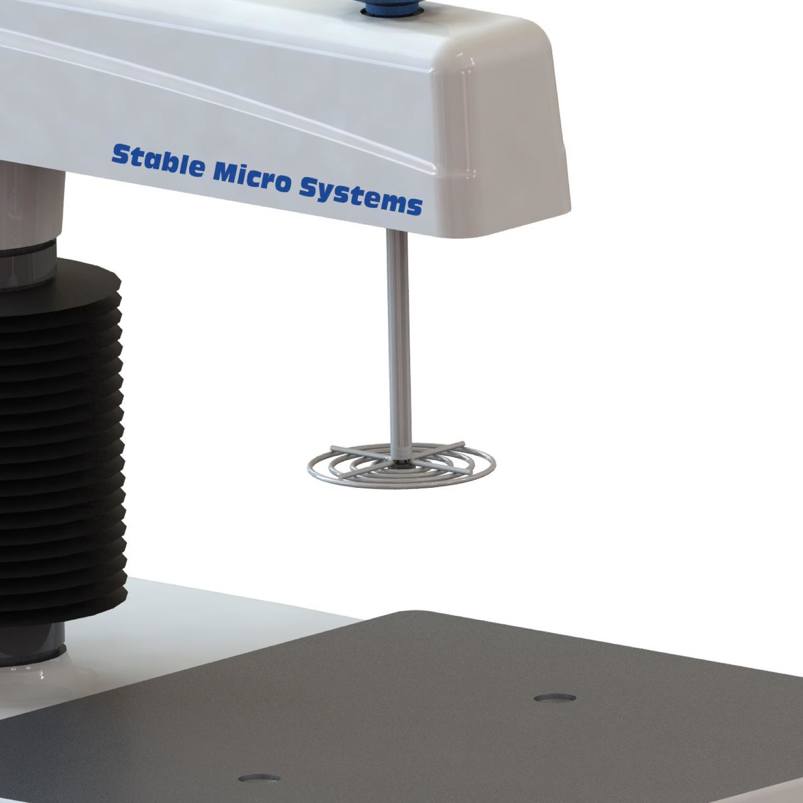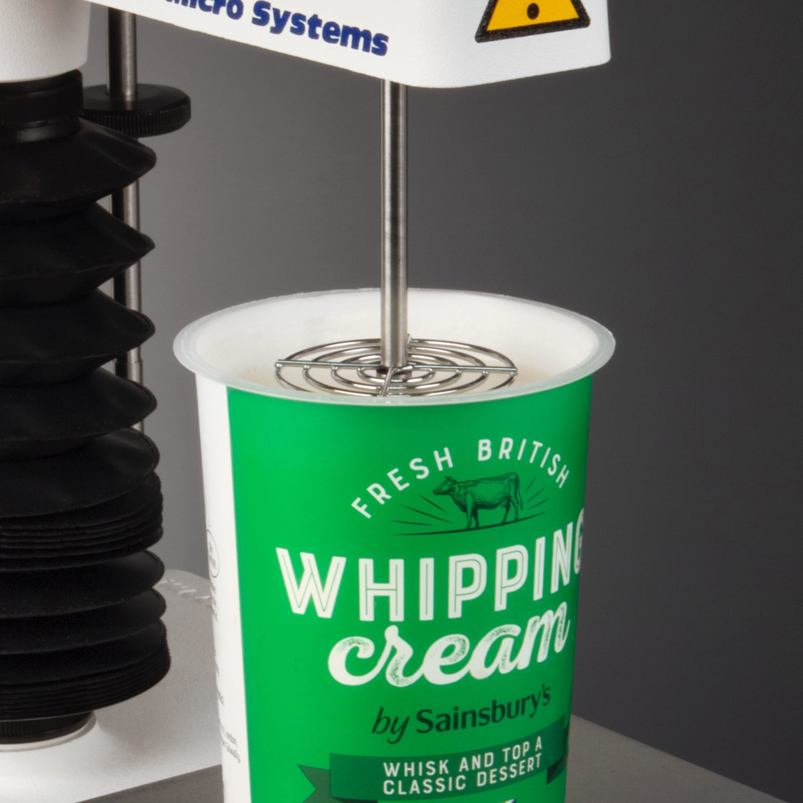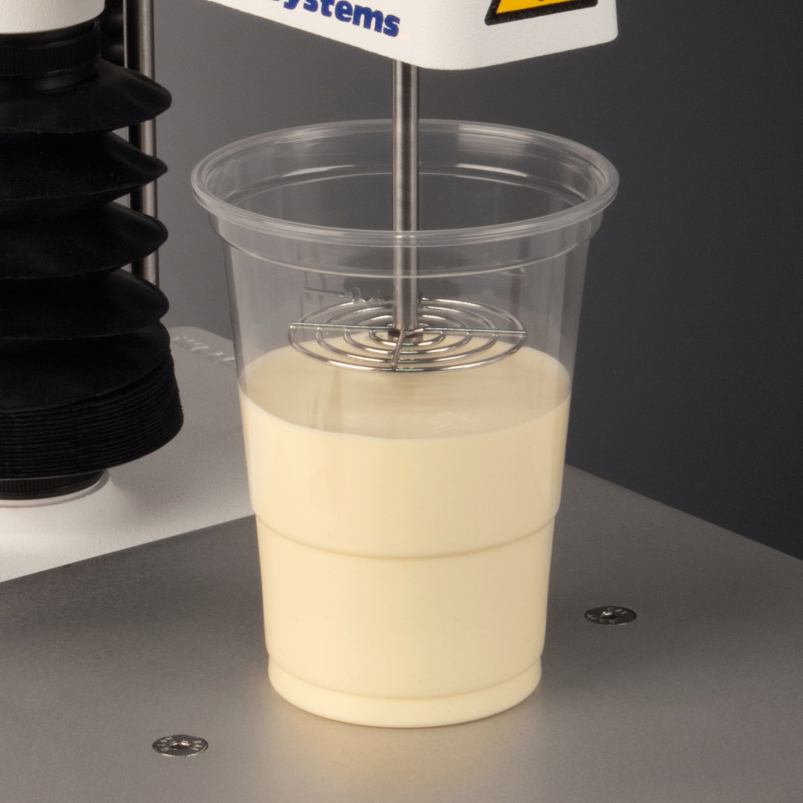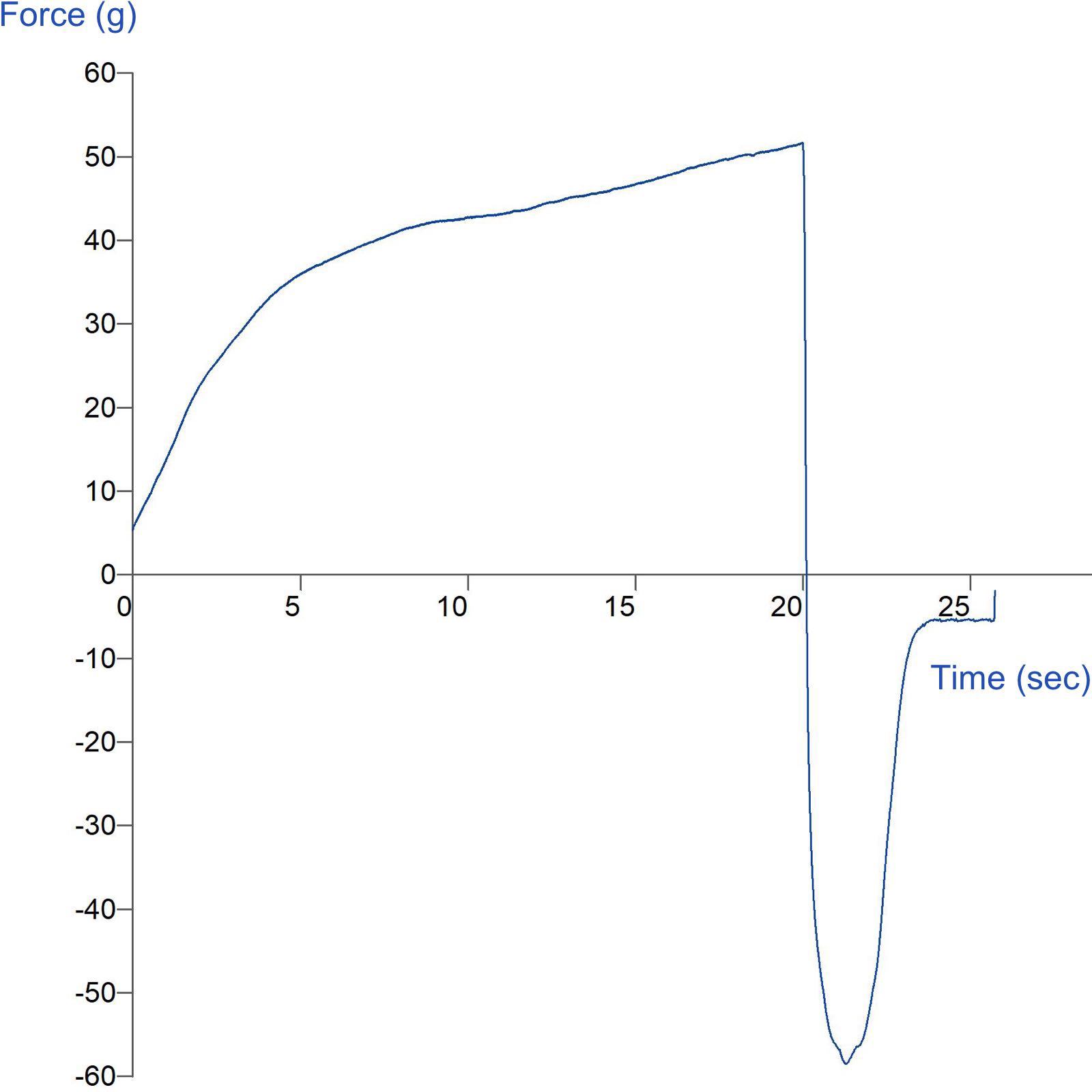Product overview
The term “strength" is clear when it comes to solid materials. Tensile, compressive and breaking strength are precisely defined values but applying these terms to foams such as whipped cream, egg whites or mousses is more difficult. In 1979 a paper was published by Horst Pichert that described a ‘Whipped Cream Probe’. At the time this more accurate method and probe replaced the apparatus that was generally in use as a means of determining the firmness of viscous foams of food. This Cream Probe is now used for measuring firmness according to a standard DLG method used for milk and milk products including ice cream and mayonnaise.
The probe is moved at a specified speed and the foam strength is given by the force plateau while the probe is travelling into the bulk of the sample.
How does the Cream Probe work?
Ideal sample form
Foamed semi-solids.
Technical information
Installation
Full installation instructions are provided within the Education Zone of the latest Exponent/Connect software version and on the technical information sheet accompanying this product.
Chemical compatibility
Stable Micro Systems probes and attachments are commonly made from four materials: anodised aluminium (AA6082 T6), stainless steel (316 T), Delrin (acetyl copolymer) and Perspex (polycarbonate).
In general use, probes and attachments made from these materials will be suitable for testing food products and inert non-food materials.
The four materials listed above are not universally resistant to all types of chemicals and as such the compatibility of the probe/attachment material with the product (to be tested) must be established to prevent damage to the probes and attachments. If the compatibility of the product with the probe is unknown to the customer then the chemical information about the product (Material Safety Data Sheet or Product Data Sheet) should be submitted to Stable Micro Systems. Stable Micro Systems will then assess the suitability of the probe/attachment material for use with the product and advise accordingly. If this advice is not sought then Stable Micro Systems will not accept liability for probes/attachments damaged by chemical attack from the product being tested.
Cleaning and maintenance
All probes and attachments may be cleaned in warm (or hand hot) water using a mild detergent. A soft brush may be used but abrasive cleaning aids should be avoided. Stable Micro Systems products should not be microwaved or cleaned in a dishwasher.
Screw threads should be lightly lubricated after drying using a light lubricant, e.g. petroleum jelly, mineral oil. This will aid the fitting and unscrewing of the item. Each component of a probe or attachment should be wrapped separately when stored, to avoid scratching or chipping. This will safeguard against any unnecessary damage to the accessory.




